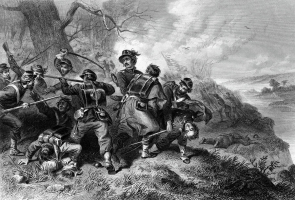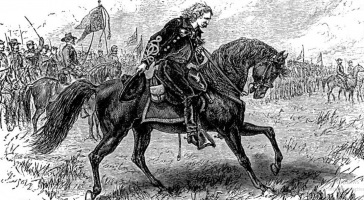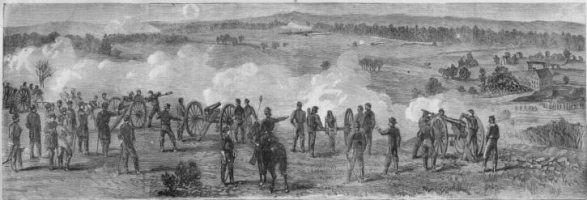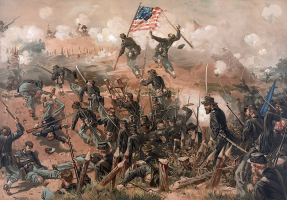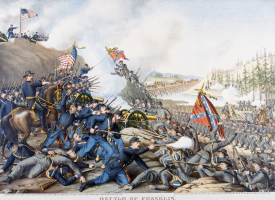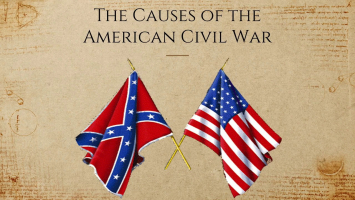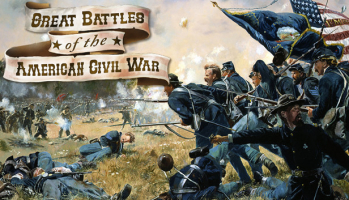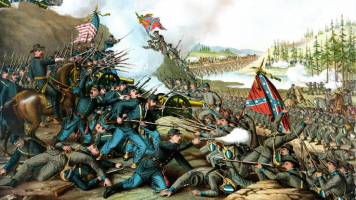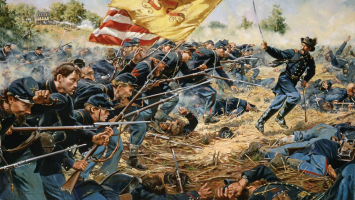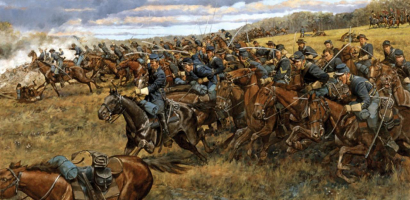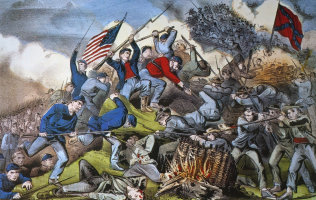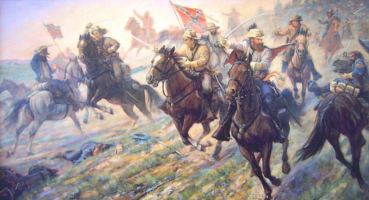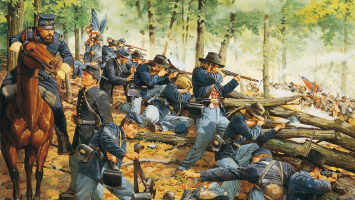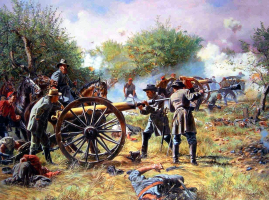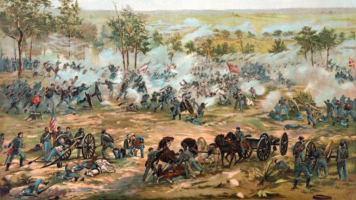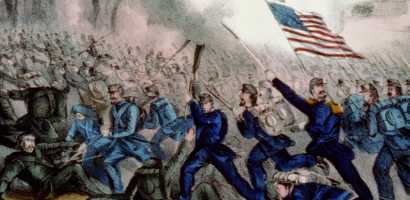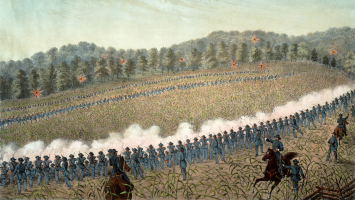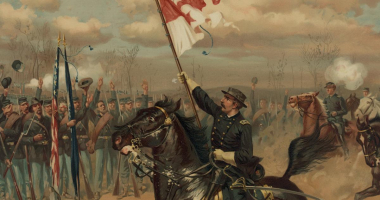Top 10 Facts About the Town of Harpers Ferry in the American Civil War
The small town of Harpers Ferry, West Virginia, played a significant role in United States history, even before the state of West Virginia was separated from ... read more...Virginia during the Civil War. In this article, let's find out the top facts about the vital role of the Town of Harpers Ferry in the American Civil War.
-
John Brown, who is well known for assassinating slaveowners in "Bleeding Kansas," decided in 1859 that he would free the slaves in Virginia by starting a rebellion that would sweep throughout the slaveholding state. Brown intended to seize the Harpers Ferry armory and utilize its supply of weapons to arm his followers in order to launch his slave uprising. Brown and a company of 21 men, which included his sons, occupied the arsenal that evening on October 16, 1859.
But Brown's raid was doomed from the beginning. Brown and his men were stuck in the armory while troops from Virginia and Maryland surrounded their "fort" because they lacked the required ammunition for their weapons and were unable to enlist any slaves to join their rebellion. When President James Buchanan learned that the notorious "Osawatomie" Brown had intentions to incite a slave uprising in Virginia, he sent Col. Robert E. Lee and Captain J.E.B. Stuart orders to lead a company of 90 Marines in putting down the rebellion. When Lee got to Harpers Ferry, he gave the marines orders to storm the fort, free the few captives Brown had kidnapped earlier that night - among them was a Washington family member - and then seize Brown and his men. Brown, who had sustained serious injuries during the struggle, was hanged on the morning of December 2, sparking outrage across the nation. Brown served as a martyr for abolition in the North, but to Southerners, he represented northern aggression and their desire to overthrow their way of life.
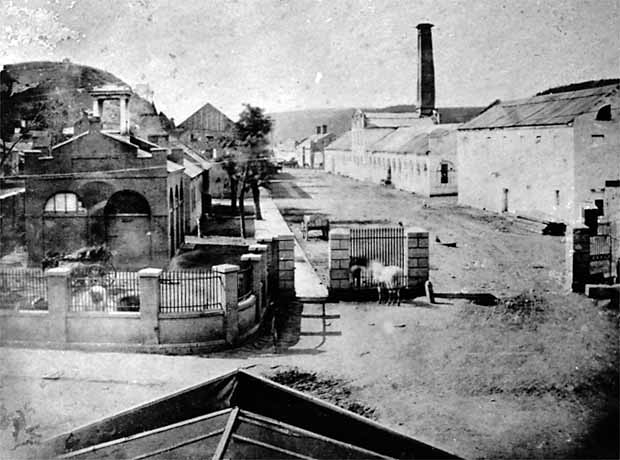
Wikipedia 
History on the Net -
George Washington, who was at the time a prosperous landowner, went to Harpers Ferry in 1794. Washington chose the town as the location for a new national armory after being impressed by its setting at the meeting of the Potomac and Shenandoah Rivers and the town's natural beauty, which Thomas Jefferson had called "worth a voyage across the Atlantic for."
From Robert Harper's heirs, the federal government acquired a 125-acre (0.5 km2) plot of land in 1796. In 1799, work on Harpers Ferry's future home of the United States Armory and Arsenal got under way. Although it is the same building, it is referred to locally as both "the armory" and "the arsenal." Only two such facilities were present in the country; the first one was located in Springfield, Massachusetts. They produced the majority of the U.S. Army's small guns together. The community became a hub for water-powered industry. More than 600,000 muskets, rifles, and pistols were made there between 1801 and 1861, when the armory was demolished to prevent capture during the American Civil War.
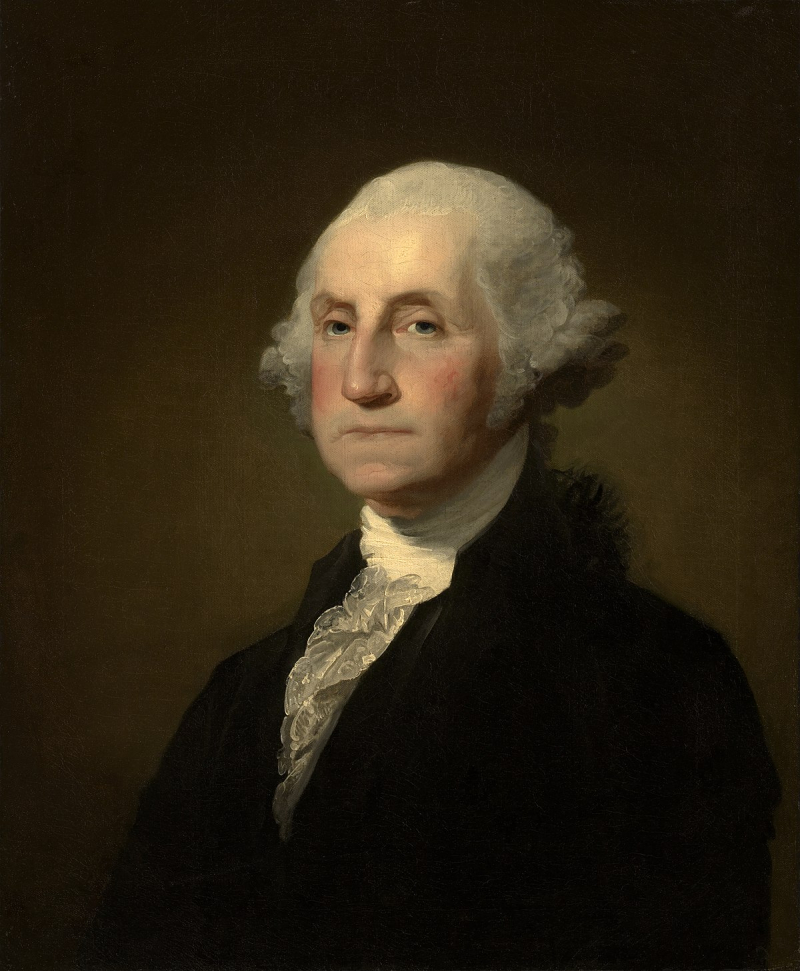
Wikipedia 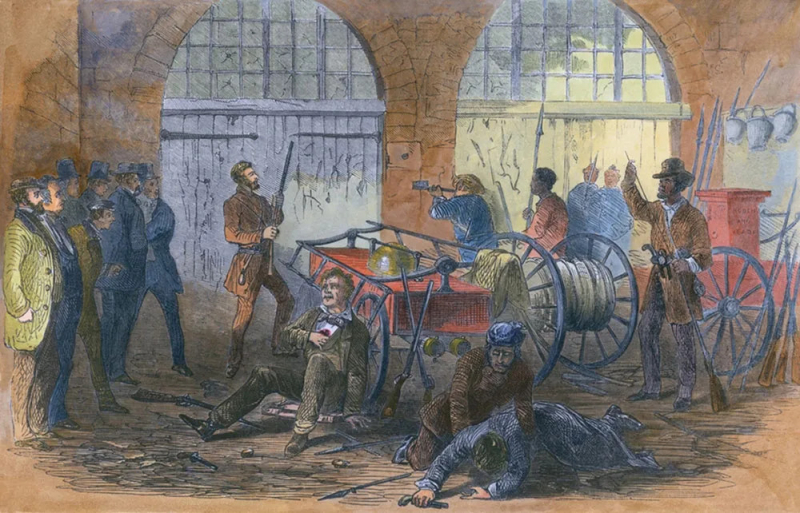
Britannica -
On April 17, 1861, Virginia decided to leave the Union, and Harpers Ferry's famed armory was immediately a target. Henry A. Wise, a former governor of Virginia who executed John Brown for committing similar crimes against the arsenal, devised a plan to take over the priceless armory. Wise wanted to assemble militia to seize the arsenal before the Federal government organized enough forces to hold it because he knew that no arms supplier south of the Mason-Dixon Line could match the quantity or quality of Harpers Ferry's production. Lieutenant Roger Jones, a Federal commander stationed in Harpers Ferry, sent a worried message to Washington warning that the armory was in danger and that thousands of troops would be needed to defend it as Virginia militia bands started to assemble less than four miles away. Jones intervened on his own when it became apparent that Washington was ignoring his request.
In the main armory building, nearly 15,000 muskets and combustibles were destroyed by fire on April 18 at 10 p.m. Jones and his troops then fled across the Potomac Bridge. However, his efforts were largely in futile because the arsenal suffered very minor damage. The remaining parts of the armory were transported south to Richmond and Fayetteville, North Carolina, with more than 4,000 rifles still in operable shape and a large amount of machinery that could be salvaged.
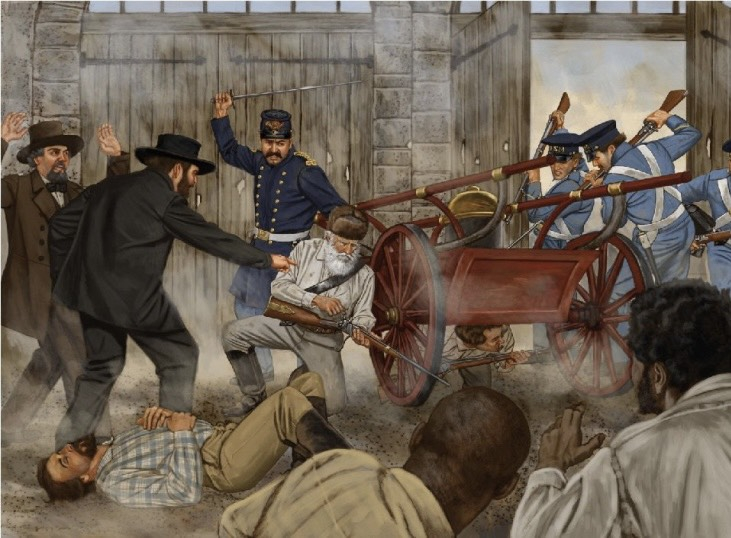
Twitter 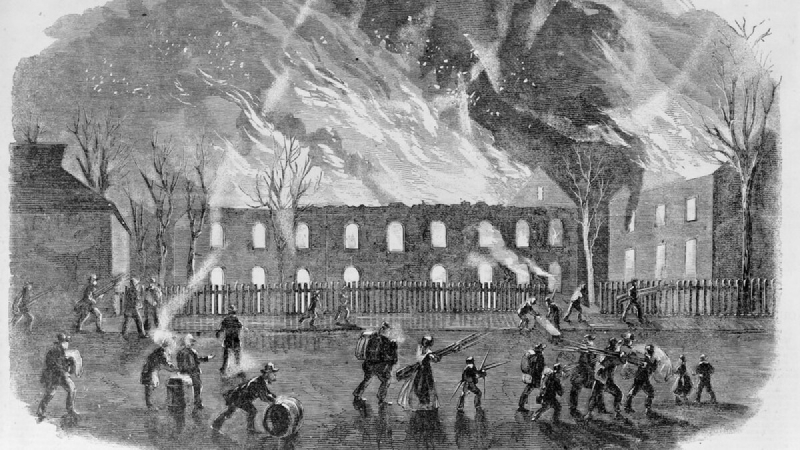
WVPB -
The town is referred described as being "easy to take and hard to hold." Although it was simple to attack Harpers Ferry, it was nearly impossible to defend, making it a strategic nightmare. Anyone who controlled the heights controlled the city because they were bordered by the Potomac and Shenandoah Rivers, as well as the steep rises of Bolivar Heights to the west, Loudoun Heights to the south, and Maryland Heights to the east.
The more than one thousand foot rises towering over Harpers Ferry had to be planted with artillery in order for the town to be successfully defended. These heights were Bolivar Heights, Maryland Heights, and Loudoun Heights. Located well below the mountains, Harpers Ferry was vulnerable to attack and had little hope of resistance, leading soldiers stationed there during the Civil War to refer to it as a "godforsaken, stinking pit."
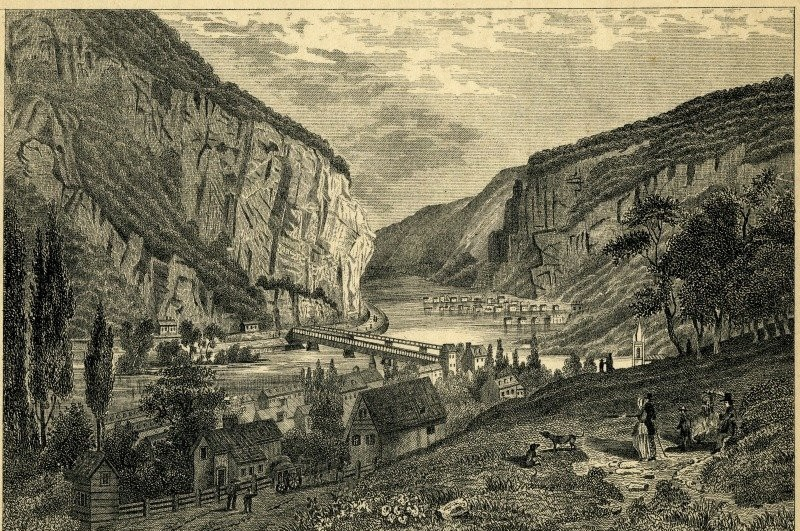
Clio 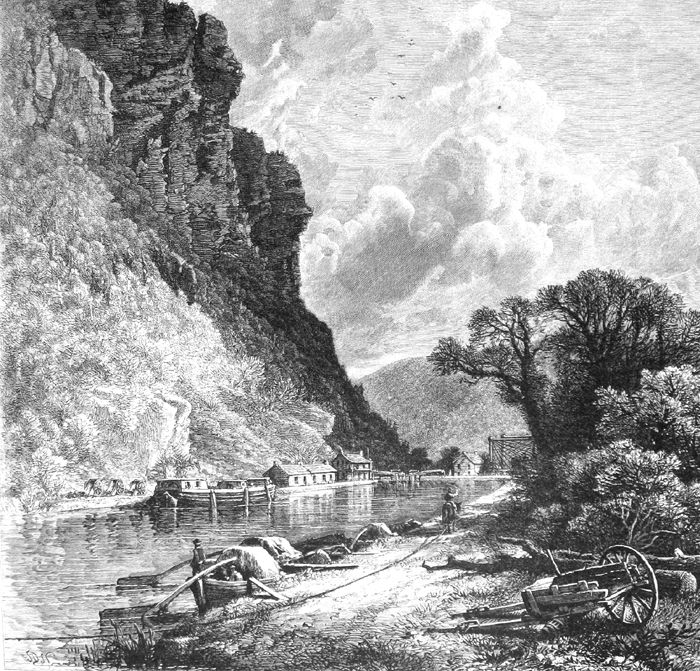
Legends of America -
From the beginning of the Civil War until the Union forces permanently reoccupied the town on July 8, 1864, the Harpers Ferry changed hands fourteen times. Both Union and Confederate forces frequently passed through Harpers Ferry due to the town's advantageous location on the Baltimore & Ohio Railroad and at the northern end of the Shenandoah Valley. "Jefferson County is where the North and South met," it was said. It served as a natural passageway for Confederate incursions into the North, such as General Robert E. Lee's campaigns in Maryland in 1862 and Gettysburg in 1863, as well as for Federal troops traveling south to thwart Rebel forces in the Valley that threatened Washington, D.C.
Beside, residents of Harpers Ferry continued to be the target of frequent guerilla raids and reconnaissance missions while it was out of control of either army. Stonewall Jackson's assault on the garrison in 1862 resulted in no significant battles being fought at Harpers Ferry, but by the conclusion of the Civil War, the town had been decimated by numerous attempts from both Union and Confederate armies to seize the crucial traffic hub. Jessie E. Johnson, a resident of Harpers Ferry, wrote of the unpredictability of the town shortly after the war: "When the Union troops came, the people were termed Rebels, and when the Confederates came, they were called Yankees."
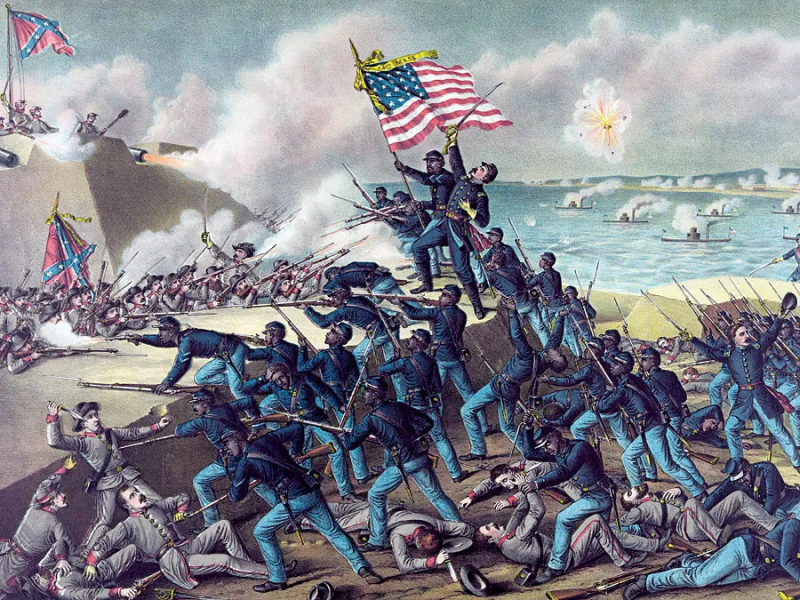
Britannica ColumbiaLearn -
The Battle of Harpers Ferry started with light fighting September 13 as the Confederates tried to capture the Maryland Heights to the northeast, while John Walker moved back over the Potomac to capture Loudoun Heights south of town. The surrender at Harpers Ferry was the largest surrender of U.S. military personnel until the Battle of Bataan in World War II, despite the fact that the number of dead and injured soldiers was relatively low afterwards. The almost 12,400 Union soldiers stationed at the fortress became Confederate prisoners after the Federal garrison capitulated on September 15, 1862.
Many of these captives were marched to Camp Parole near Annapolis after Gen. A.P. Hill granted them parole in order to be exchanged for Confederate prisoners.
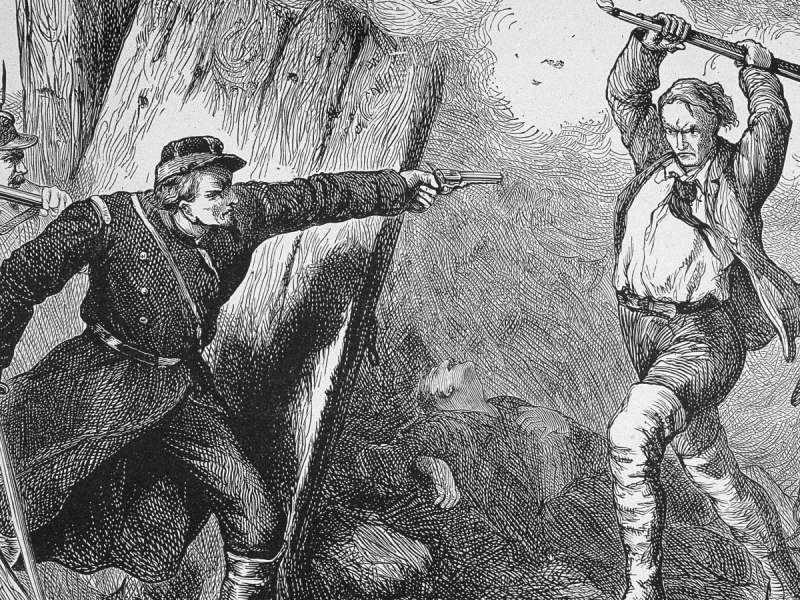
History.com 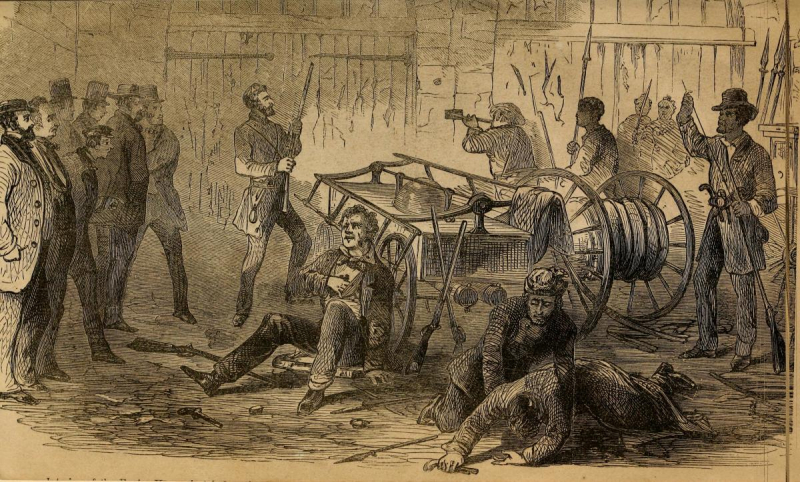
Owlcation -
After serving as a U.S. army camp in the late 18th century, Camp Hill, situated on a gentle slope above Harpers Ferry, has since been home to expansive houses for military officials. However, when the Civil War started, these mansions were quickly transformed into administrative offices and medical facilities; Camp Hill once more served as an army camp.
The Confederate army took control of the camp in the spring of 1861, but General Joseph E. Johnston, the garrison commander, ordered it to be evacuated soon. The 2nd Massachusetts Infantry soon took control of it following that. In September 1862, when Stonewall Jackson attacked Harpers Ferry, the Union troops were supported by Camp Hill, which had been built by both Union and Confederate forces and was naturally sheltered by steep banks. The Army of the Potomac marched to Harpers Ferry on September 24, nine days after the engagement, and erected their tents once more on Camp Hill and the nearby Bolivar Heights, where they remained motionless until November. Despite the garrison's surrender following Jackson's attack. Afterward, while Gen. As a result, Harpers Ferry is considered a significant Union army camp.
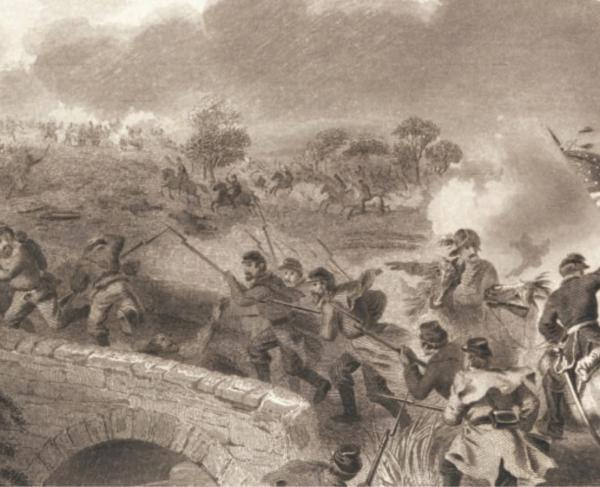
American Battlefield Trust 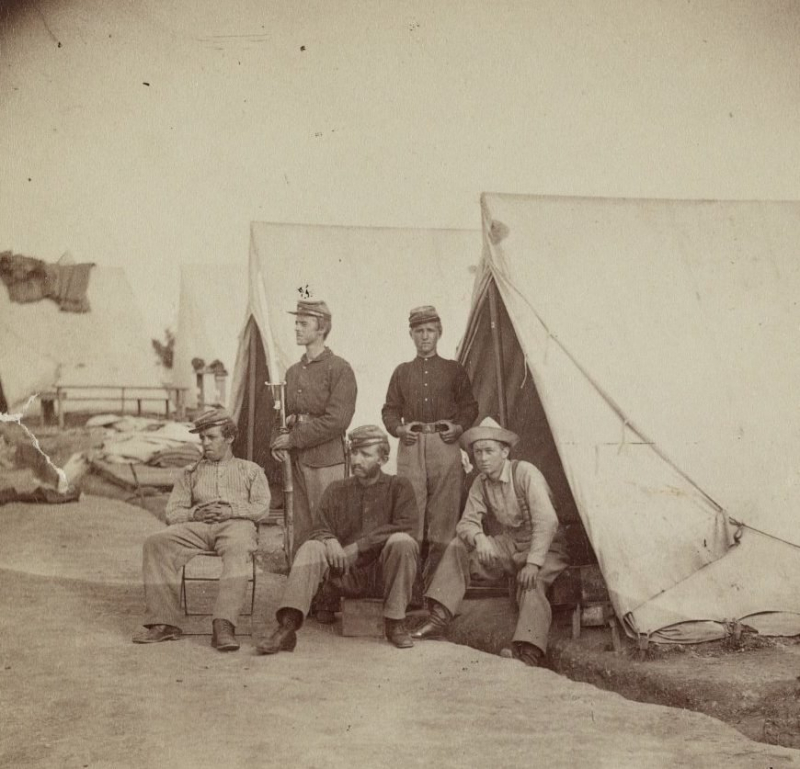
History Associates Incorporated -
Father Michael Costello, the pastor of St. Peter's Roman Catholic Church, flew the British flag over the building to protect it from numerous artillery bombardments and battles for the town during the Civil War.
St. Peter's was spared due to its alleged British affiliation despite the crippling damage other neighboring structures endured during the Battle of Harpers Ferry and subsequent artillery bombardments in the summers of 1863 and 1864. St. Peter's was regularly used as a temporary hospital because it was still standing during the war, and Costello continued to conduct services and give sacraments there. The only church in Harpers Ferry that had not been badly damaged or destroyed by Northern or Southern soldiers was St. Peter's.
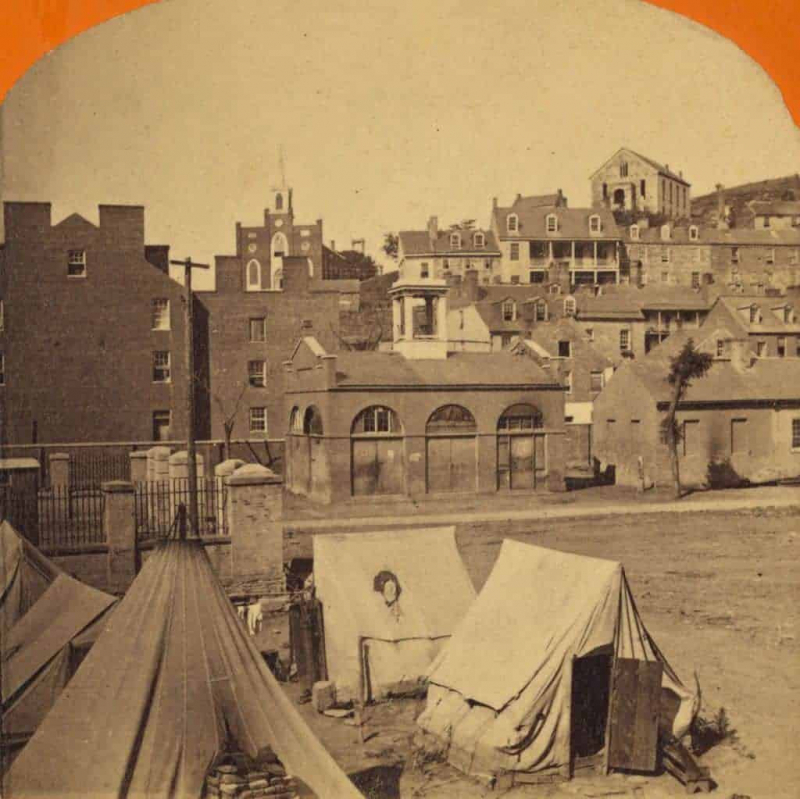
The Welsh of Harpers Ferry 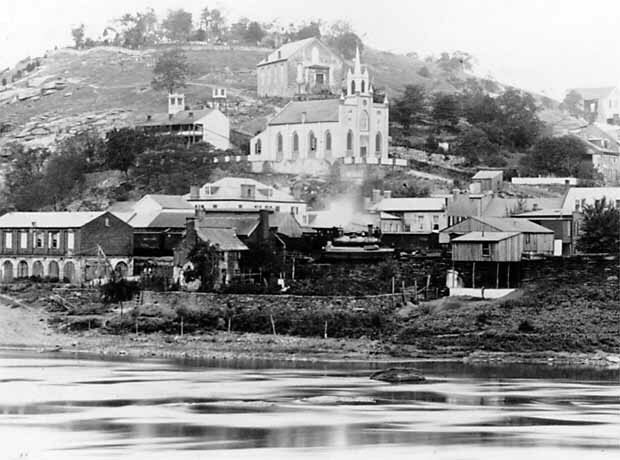
TheClio -
Gen. Philip Sheridan's soldiers were baffled by Confederate partisan ranger Col. John Singleton Mosby's skill at eluding arrest by vanishing from his pursuit in November 1864, during Sheridan's Shenandoah Valley campaign. A Federal cavalryman was scouting for insurgents when he fell down a trapdoor on the floor of a burned and abandoned building, making a surprising find close outside Harpers Ferry. There was a tunnel going to an underground staircase under the trapdoor.
The Federals returned with a scouting group and entered a tunnel that they thought could house 300 horses by descending the staircase into it. Only one entrance to the room existed, and it was so small that only one horse could pass through it at once and only after wading through three feet of water. The entrance was concealed by bushes and rocks, and the hideout was designated by a tall cliff. They immediately understood that the room belonged to Col. Mosby and his group of rangers, which allowed them to escape federal authorities' custody.
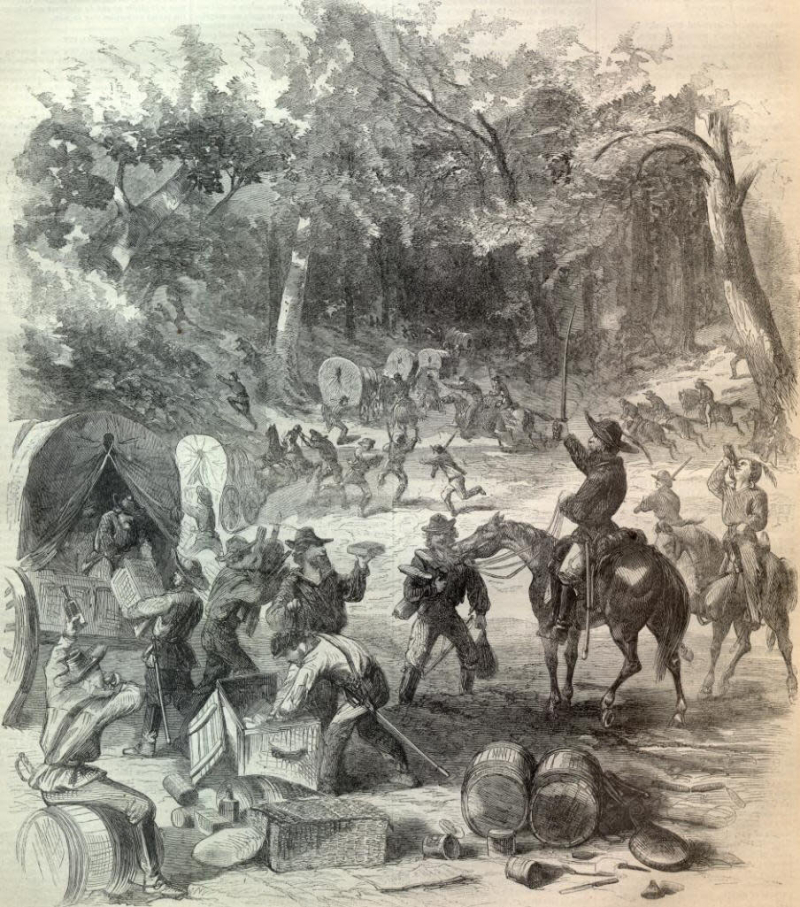
Visit Loudoun 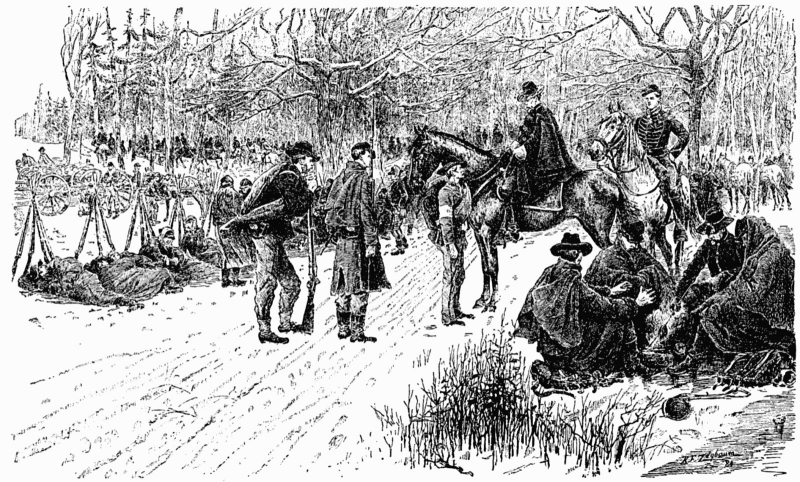
Project Gutenberg -
Even now, Harpers Ferry has been remarkably well kept. The majority of the Harpers Ferry battlefield has been conserved by the National Park Service, although sizable portions are still in danger from redevelopment. The Civil War Trust was able to successfully conserve 325 acres of threatened land at Harpers Ferry in 2002, and a crucial section of battlefield terrain on Bolivar Heights in 2013. Nearly 343 acres of the West Virginia battlefield's 542 acres of sacred land have now been added to the national park. Viewsheds are created on the remaining land, which is protected by a conservation easement.
Through a collaboration between the National Parks Conservation Association, the National Park Service, and the Bank of Charles Town, all of whom recognized the property's significant historical significance, the property, along with 3.28 adjacent acres (distributed across two tracts), was protected in 2013.
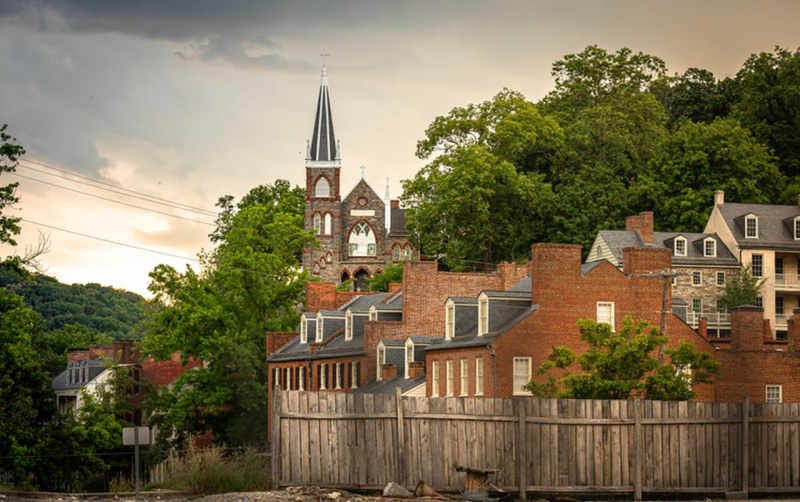
Only In Your State 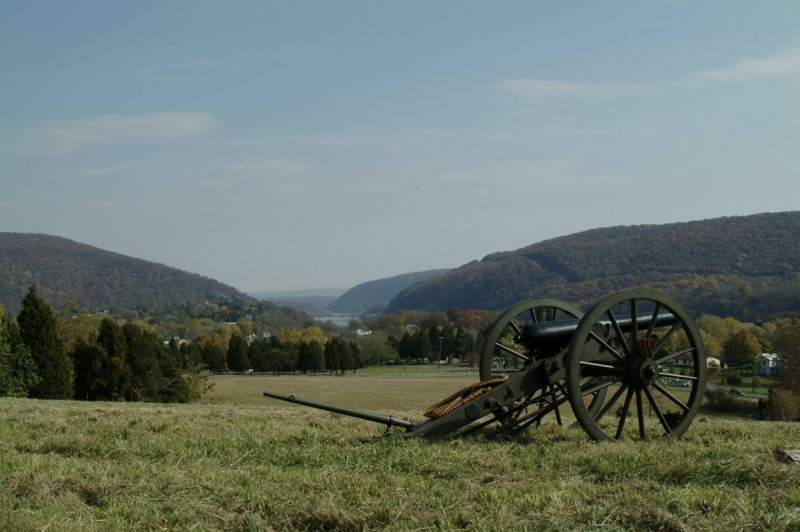
Farm and Dairy












